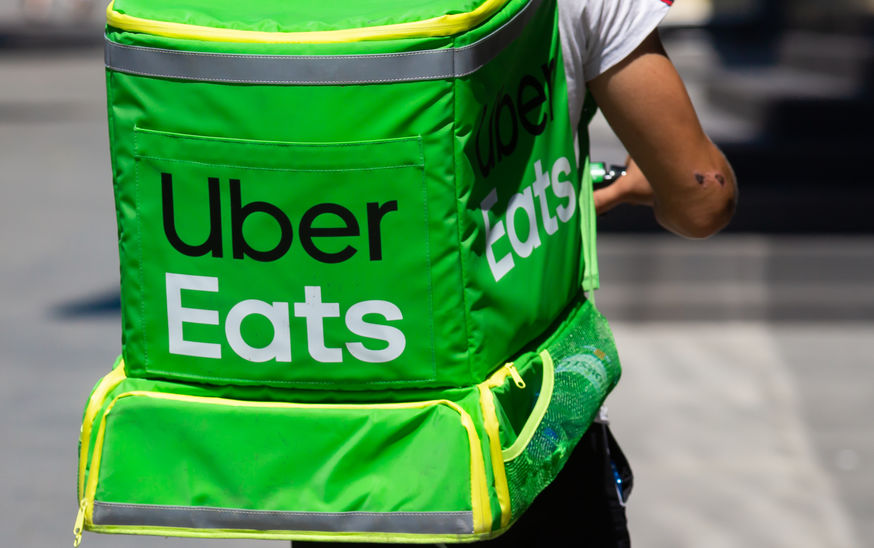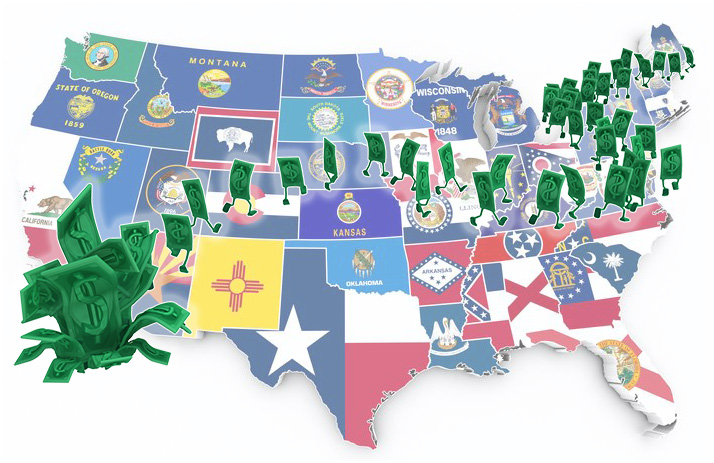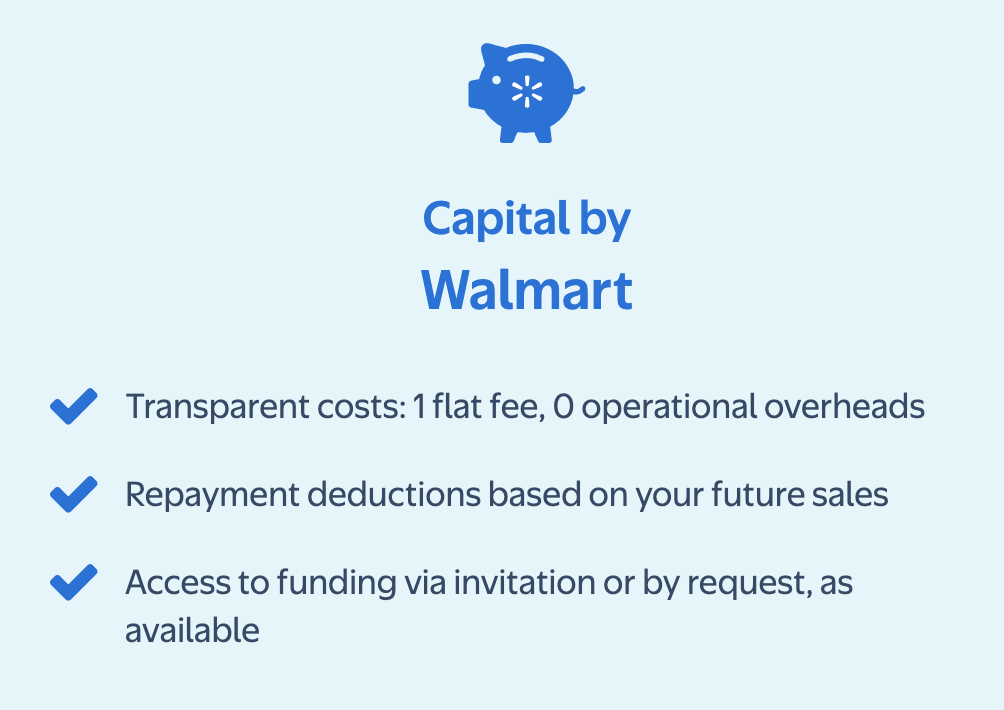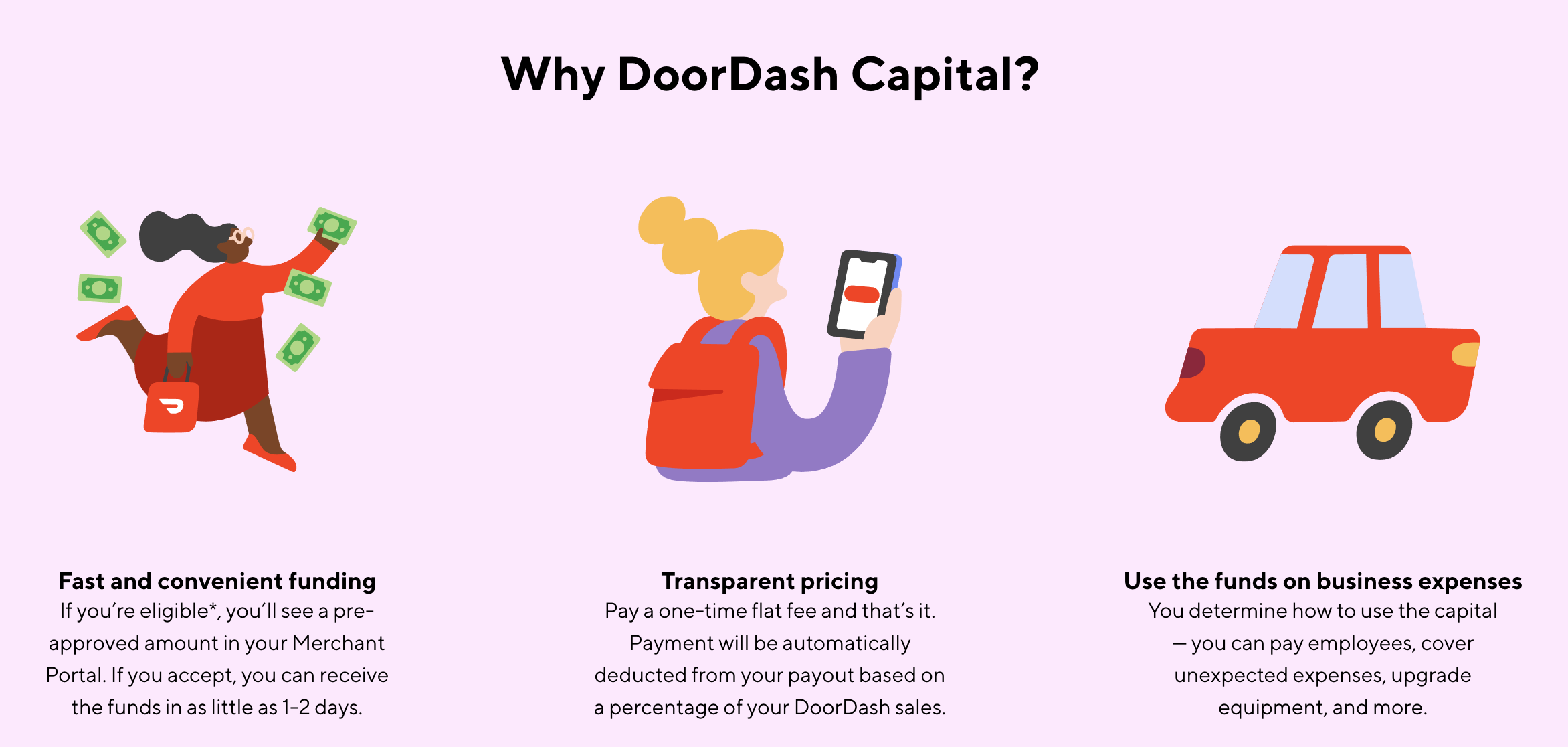‘Like Family’: How Critical Financing Became One of the Fastest Growing ISOs
October 17, 2025When Farmingdale, Long Island-based Critical Financing (CFI) showed up as the 2,671st fastest growing company on the Inc. 5000 list this year, it was a testament to the company’s many years of hard work. Founded in 2017 by its CEO Brandon Garcia, CFI connects small businesses with a variety of unsecured working capital products.
“[Getting that recognition] was great,” said Garcia. “And I think it’s also a testament to the group that we have. It excites the people that work here too. This is a very stressful job, it’s not easy.”

In CFI’s day-to-day, the sales team finds itself competing against multiple companies on almost every deal that comes across their desks. Small businesses regularly put the pressure on them to get the best rate, the fastest funding, or a combination of both. They say this only increases their drive.
“It has definitely helped us in a way,” Garcia said of it. “I mean who doesn’t want a deal that doesn’t have competition, you can kind of take your time with it, right? But I think when there’s urgency, our guys perform better.”
In the very beginning it was just Garcia himself who had worked in the industry since 2012. He was soon after joined by a former colleague, Robert Menzel, and the two set off to really build up a company. That’s easier said than done, especially in a business where trust is paramount. So they looked within their own circle of friends and family to create a solid foundation.
“I felt it was best that we take care of our own,” Garcia said. “Let’s take care of people that we know that are looking for a new opportunity, and we train them the way that we want them to be trained. We want to give that experience and push it over to them.”
Among those they’ve brought on board to their current headcount of sixteen has been Garcia’s own mother, who works as the company’s head processor. And while they are still actively looking to bring on more people, Garcia said that the number of employees isn’t the ultimate metric of success, but rather the abilities of the ones you do have and the relationships they have with everyone else is the key. On this point, CFI is on pace to surpass $100 million in funding this year. It’s because of their continuous progress and results that they finally got the confidence to apply into the Inc. 5000 and were successful in making it.
“To be able to put that Inc. 5000 sticker in your signature, on the website, it just has a different swag to it,” said Garcia’s partner Menzel, “where it just carries a lot of weight, and even the merchants see that.”
When asked if the end goal was to become a lender themselves, both Menzel and Garcia say they’re happy with what they already do now, which is connect the merchants to the most appropriate source.
“While many competitors chase the close, we lead with transparency and real strategy,” Garcia said. “We act as consultants first. Even if a client doesn’t move forward with us, we want them to walk away smarter and more prepared than when they came in.”
“When you are a lender, you don’t really have that close relationship with other lenders because you’re your own lender,” Menzel said. “You’re not talking to them about deals, how to get deals done, ‘what are they doing? What did they change this month compared to what they’ve been doing, what’s working, what’s not.’ I think having those relationships with the lenders and the lenders’ reps, it’s huge and it makes the job fun, because they’re really all great people that we deal with.”
That closeness is what it’s all about for them.
“We are a group of people who genuinely care about each other,” Garcia said. “We’ve celebrated marriages and welcomed new babies. We hang out on weekends, show up for one another, and create a work environment that doesn’t feel transactional.”
The outcome of that are months where the company is exceeding $10 million a month in funding, and they’re now even more fired up after the Inc. 5000 placement.
“You don’t need this massive shop to be successful in this industry,” Garcia reiterated. “It’s really that simple. You just need the right people. You need to be loyal and just really be truthful with everyone. And good things happen. That’s a big thing for us.”
Revenue Based Financing Continues to Spread at Global Pace
September 30, 2025 Earlier this month, Uber Eats joined the revenue-based financing movement by partnering with Pipe Capital.
Earlier this month, Uber Eats joined the revenue-based financing movement by partnering with Pipe Capital.
Karl Hebert, Vice President of Global Commerce and Financial Services at Uber, said of it, “We are happy to team up with Pipe to bring working capital to Uber Eats. Restaurants are our partners at Uber, and the backbone of our communities, yet many struggle with access to capital.”
It’s an unsurprising step considering rival DoorDash rolled out a merchant cash advance program nearly four years ago, though Uber arguably began experimenting with MCAs nearly ten years ago. And Uber is hardly doing it just to do it. Uber, for example, rolled out Uber Eats Financing, a revenue based financing product in Mexico through a partnership with R2 this past January, which went so well that they also rolled it out in Chile months later.
📢 Announcing a big milestone for R2 & @Uber!
Following a successful launch in Mexico, we’ve expanded our partnership with Uber Eats to Chile — bringing frictionless access to capital to thousands of merchants across the region. https://t.co/61WgP1ZtHy
— Roger Larach (@rogerlarach) April 30, 2025
In Chile with R2, the service is described as taking place entirely within the Uber Eats Manager App with a 5-minute application process and payments made automatically and deducted by a fixed percentage from sales made using the platform.
In the US with Pipe, it says that the Uber Eats App Manager will show capital offers from Pipe that are customized based on restaurant revenue, cash flow, and business performance.
Uber joins Amazon, Walmart, Shopify, Intuit, Stripe, DoorDash, PayPal, Square, GoDaddy, Wix, Squarespace and others in offering a revenue-based financing product.
Revenue-based financing as a product type is available in but not limited to the US, Canada, Mexico, Chile, UK, Germany, Ireland, Spain, South Africa, Nigeria, India, Hong Kong, Netherlands, Australia, Japan, Brazil, Singapore, and more.
The Great Concession, How the MCA Product Effectively Proved It Was Right All Along
September 26, 2025 There was no greater irony than the State of Texas banning ACH debits from sales-based financing providers at the same time that the State of Washington was celebrating the coming age of sales-based financing. In Texas, for example, the motivation for curbing sales-based financing was built on the premise that “this type of financing has raised significant concerns about predatory lending and that state attorneys general as well as the Federal Trade Commission have obtained high-profile judgments against such financing for predatory practices.” Meanwhile, in Washington, the motivation for the state holding the opposite opinion was that sales-based financing “increases access to capital for small businesses in Washington state, particularly those that have been historically underserved or underbanked.”
There was no greater irony than the State of Texas banning ACH debits from sales-based financing providers at the same time that the State of Washington was celebrating the coming age of sales-based financing. In Texas, for example, the motivation for curbing sales-based financing was built on the premise that “this type of financing has raised significant concerns about predatory lending and that state attorneys general as well as the Federal Trade Commission have obtained high-profile judgments against such financing for predatory practices.” Meanwhile, in Washington, the motivation for the state holding the opposite opinion was that sales-based financing “increases access to capital for small businesses in Washington state, particularly those that have been historically underserved or underbanked.”
How did these states reach the opposite conclusion?
There’s no caveat to how the Washington State program works. The State’s Department of Commerce partnered with Grow America and the operation is backed by a federal grant (SSBCI-21031-0048) to roll out and administer a revenue-based financing program as part of Washington’s State Small Business Credit Initiative. It’s sales-based financing or in this case revenue-based financing (which is the more common phrase these days). Grow America’s revenue-based financing program utters a very familiar phrase in its marketing.
“The months you generate more revenue, you pay a higher amount, when business is slower you pay less,” the company advertises.
This was at one time the signature calling card of a merchant cash advance, but now such features have been repackaged and rebranded into something similar but different, and everybody is doing them.
The Grow America program applies a 20% holdback on adjusted monthly revenue and requires a minimum monthly payment of $1,000 if the 20% holdback does not generate at least $1,000 for the month. Merchants can get approved for anywhere from $50,000 to $1 million. The product is marketed as having a 1.24 factor rate and an estimated 14.27% APR with a 3-year term. As industry participants are aware, increasing sales would translate into increasing payments, which means a rapidly paid off loan could potentially result in a final outcome APR in the triple digits, far and away from the “estimate.”
The irony is that the notable benefits of a similar product, merchant cash advances, which have no minimum monthly payments, no fixed term, and are not absolutely repayable, are eliminated when restructured in this way and presented as “revenue-based financing loans.” Revenue-based financing loans take the underlying structure of MCAs (payments tied to sales) and then strip away the benefits. However, when structured as loans, the argument often goes that they are likely to be cheaper, which may be true on average, but is not always true.
Indeed, Grow America leads specifically with price as for why its product, similar to its privately owned competitors, are the better option:
“There are a lot of online lenders offering revenue-based loans that promise instant approvals, but their terms are intentionally confusing, and the fees are high,” Grow America advertises. “Our lenders aren’t like that. They’re mission driven.”
In Texas, the author of the bill that banned debits from such financing providers “informed the [legislative] committee that commercial sales-based financing has become a popular financing option for small businesses desperate for credit and that, unlike traditional loans, this type of financing is repaid as a percentage of future sales or revenue.”
Indeed, it is very popular. The largest providers or brokers of such financing today whether structured as a purchase or loan, are household names like Amazon, Walmart, Shopify, Intuit, Stripe, DoorDash, PayPal, Square, GoDaddy, Wix, Squarespace and more. Some structure them as a purchase and call it a merchant cash advance and some structure it as a loan and call it revenue-based financing. In either case, payments are tied to the percentage of future sales or revenue.
In egregious cases of wrongdoing one way or another, such incidents have historically been a result of deceptive marketing or payments from a merchant exceeding the contracted amount. In New York, when transactions are structured as a purchase, courts generally look to make sure that the agreements have a reconciliation provision in the agreement, whether the agreement has a finite term, and whether there is any recourse should the merchant declare bankruptcy. Legally speaking, the products have become pretty well defined and understood in the court system.
Like Washington State, GoDaddy, which recently announced its new merchant cash advance program, markets its product in an almost identical fashion.
“If your sales go up, the MCA will be paid sooner; if the sales are slow, it’ll take longer,” GoDaddy says.
Same message.
Washington State requires merchants to make a minimum payment every month and a balloon payment if not fully repaid within 3 years. GoDaddy, by contrast, advertises no minimum payment amount, no set payment schedule, no penalties, and no late fees. One’s a loan, one’s a purchase.
While the best course of action is best left to the merchants, there appears to be a near-universal concession that the underlying nature of how merchant cash advance agreements were contemplated, payments tied to sales, made strong logical business sense all along. Washington State emphasizes this fact.
“We know that your business has its own needs and loans with fixed payment amounts may not be the best option for you,” they advertise. “The revenue-based financing fund offers loans with flexible payback terms so you can grow your business immediately and pay back your loan based on your varying revenue.”
Recent studies also now highlight the benefits of cash-flow-based underwriting.
In Sharpening the Focus: Using Cash-Flow Data to Underwrite Financially Constrained Businesses, “The paper finds that adding cash-flow information substantially increases the predictive signal of models that rely primarily on the business owners’ personal credit scores and firm characteristics.”
There’s also Square, the largest revenue-based financing provider in the US, that has explained why this system just works better. Square says that they can fund more businesses and have higher payment success rates than if they were to follow more conventional methods of underwriting and repayment.
“Square Loans addresses [the credit] gap by using near real-time business data to assess creditworthiness, evaluating metrics such as transaction volume and revenue patterns to offer short-term loans — with repayment on average in 8 months,” Square wrote in a White Paper. “This allows for a more accurate and timely understanding of a business’s capacity to borrow and repay. And loan repayments are higher during periods when business is stronger and reduced when sales are lower.”



What’s the sentiment these days on payments tied to sales revenue? The market has spoken.

Why Lexington Capital Holdings is Expanding Into the Real Estate Business
September 24, 2025Lexington Capital Holdings is expanding beyond small business lending and into real estate, the company recently revealed. Lexington, a Long Island-based financial marketplace and brokerage led by CEO Frankie DiAntonio, is launching Lexington Estates to buy, sell, rehab, and hold properties long term.
According to DiAntonio, deals involving real estate have already been a part of their regular broker product mix for a long time, but when deciding whether or not they wanted to lend against real estate on their own or become the actual buyers and builders, they felt the latter would be more impactful. A syndication fund for these real estate deals, for example, will be open to employees of the firm to participate in. Lexington’s existing operation already has about 50 sales reps. Two from that group will move over to the real estate side to join a number of new hires they’re bringing on board to carry this plan out.
“Business is a team sport and I wouldn’t have been able to do any of this without the amazing Lexington team behind me,” DiAntonio said of the company’s success to-date.
Lexington Estates is already closing on its first property on Long Island. While they will make their focus local right out of the gate, they plan to work on deals both residential and commercial throughout the United States within 12 months. DiAntonio cut his teeth on real estate deals by participating in them personally outside of his business and now he’s making it a corporate endeavor. Whether it’s residential, retail, office space, industrial space, or anything else, they plan to evaluate it on the merits of the potential profits.
“I’m looking for deals,” DiAntonio said. “I’m looking for what’s the best bang for our buck.”
DiAntonio views this ambitious plan as one of absolute necessity given the challenges that the younger generation faces with the cost of living going up.
“I strive so hard to put my people in a position where they can make more money than the average American because you can’t even live the average American life and be average anymore,” DiAntonio said. “You actually have to be great just to live an average American life.”
Lexington Estates plans to officially launch on October 12th.
Catching Up With Kalamata
September 18, 2025 Kalamata Capital Group is continuing to fund in Texas through one of its affiliated entities, the company confirms. Kalamata, which recently upsized its 2024 securitization by 25% with notes expandable up to $500 million, offers a variety of funding products to small businesses around the United States. A new law that recently went into effect in Texas has prompted Kalamata and companies like theirs to get the word out to their partners about any applicable adjustments.
Kalamata Capital Group is continuing to fund in Texas through one of its affiliated entities, the company confirms. Kalamata, which recently upsized its 2024 securitization by 25% with notes expandable up to $500 million, offers a variety of funding products to small businesses around the United States. A new law that recently went into effect in Texas has prompted Kalamata and companies like theirs to get the word out to their partners about any applicable adjustments.
More front and center for the company, however, is the introduction and evolution of Kalamata Cash, its in-house proprietary software.
“We went live with everything, including our syndicator profiles and access to the outside world as well, and that’s been a really exciting development for the company,” said Brandon Laks, co-president at Kalamata, “because instead of licensing software, which the software we were on was great before, it gives us the ability to roadmap exactly what we want to do.”
Kalamata, for example, is 100% broker-driven, and they can custom-tailor the process to best suit their relationships.
“Our brokers can come in and see live calculators,” Laks said, “so when they submit a deal and we send an offer, they can get a live view of what steps are outstanding, they can play around with the sliders and choose their offers.”
And there’s a lot more on the horizon that they’re integrating with and adding on.
Guggenheim Securities served as sole structuring advisor and the sole initial purchaser of the notes in the Kalamata securitization deal. At the time of the announcement, Laks said, “The access to additional capital will allow Kalamata to continue supporting Small Businesses and invest more capital in proprietary technology to stay at the forefront of the small business financing industry.”
The Merchant’s Paying, The Bank Statements Were Fraudulent: Talking With MoneyThumb
September 16, 2025Small funders trying to tackle fraudulent submissions with no tools stand almost no chance in today’s environment. A recent survey conducted by both MoneyThumb and deBanked, for example, found that small funders experience fraud in 11.8% of applications on average, more than double the rate of larger funders. In the past, detecting altered documents such as bank statements, was best managed by experienced underwriters, but now with technology and AI in the palm of everyone’s hands, today’s fraud is often imperceptible to the naked eye.
“If you go back to 2020 when we created this [Thumbprint technology], I would say about 80 to 85% of bank statements that were fraudulent we would look at and say, ‘there’s the fraud,'” said Ryan Campbell, CEO of MoneyThumb. “Now it’s sub-5% that I can identify just with the human eye, and so technology has just absolutely created an environment where people can create fraud in a way that they never could.”
Thumbprint is MoneyThumb’s patented fraud detection tool. It can bolt into any industry CRM. Historically, an immediate default was the first clue that a fraudulent app had slipped through the cracks, but even accounts in good standing may not be what they seem.
“[What] we’ve seen is people take a smaller loan, then a slightly larger loan, and then the big one, the third loan—default,” said Campbell.
 Bank statements that are otherwise in perfect order may have had their transaction descriptions edited so that loan deposits from third parties look like revenue or round-trip payments with the owner’s personal account are reclassified to look like daily sales. For fraud like this, the numbers are real, the statements are real, but what’s revenue and not revenue is obfuscated. And when the deal is approved based on the misleading metrics the scammers can actually stick around to pay for a while to convince the underwriters that they’re worthy of more.
Bank statements that are otherwise in perfect order may have had their transaction descriptions edited so that loan deposits from third parties look like revenue or round-trip payments with the owner’s personal account are reclassified to look like daily sales. For fraud like this, the numbers are real, the statements are real, but what’s revenue and not revenue is obfuscated. And when the deal is approved based on the misleading metrics the scammers can actually stick around to pay for a while to convince the underwriters that they’re worthy of more.
“We’ve run quite a few portfolio analyses for our funders, and so we’ll review all of the statements that they have, all of the funded deals that they’ve done, and many are surprised to find out that they actually have fraudulent paying accounts on their books,” Campbell said.
Since the rate of fraudulent applications is so material, catching the fraud as early as possible is paramount. This saves cost on underwriting, reduces time spent on deals that won’t move forward, and spares referral partners the pain of a deal getting killed at the finish line for an uncurable problem.
“As soon as it comes in, rather than wasting time on ‘are we collecting this? Are we extending offers?’ because think, it’s not just the fraud,” said Campbell. “Even if you can catch the fraud at the very end, somehow it’s not the catching part, it’s the fact that your staff is working a fraudulent deal for some matter of days. And Thumbprint just says, ‘get it out. It’s gone, done,’ and right at the beginning of the process.”
Don’t Wait, Arbitrate: New Era ADR and MCA Claims
September 10, 2025 “New Era, in a nutshell, is 100 days in arbitration, so legally enforceable arbitration, all for one flat fee, all on our platform,” says Rich Lee, CEO of New Era ADR. “This is deliberately built for the bulk of litigation, the stuff that organizations and people just want to get resolved fast, and they don’t want to just accept sub-optimal outcomes like walking away from a collection or settling an employment claim when they didn’t do anything wrong.”
“New Era, in a nutshell, is 100 days in arbitration, so legally enforceable arbitration, all for one flat fee, all on our platform,” says Rich Lee, CEO of New Era ADR. “This is deliberately built for the bulk of litigation, the stuff that organizations and people just want to get resolved fast, and they don’t want to just accept sub-optimal outcomes like walking away from a collection or settling an employment claim when they didn’t do anything wrong.”
Many industries, including automakers, banks, real estate companies, sports teams, and even the Olympics, rely on the New Era platform to handle arbitration cases. MCA companies too are using New Era, according to Lee. While arbitration as an established process to resolve contract breach claims is not new in MCA, the workloads experienced by certain court systems can make the speed and efficiency of arbitration a preferred alternative. New Era’s arbitration is all virtual so one party is not prejudiced by having to travel a long distance to go through it. And the process, managed by arbitrators that are knowledgeable in the specific area of law a claim calls for, is fast enough that if an award is issued in favor of a funder, they’ll be able to act on it quickly.
“If you started in court, because of the congestion, a lot of courts you’re waiting sometimes a year to get that court order,” Lee says. “But on our platform, inside of about 100 days, you’re getting the arbitration award and then maybe you’re tacking on an extra 30 days just for the court to give you the corresponding order. So that’s how it works. And so we’re actually seeing these MCA clients, their awards now on New Era are getting enforced and they’re getting the corresponding court orders.”
Beyond the 100 day resolutions, they actually have some funders who are getting arbitration awards for uncontested disputes in far less than 100 days, some in 30 days. Given that the arbitrators are neutral, even these situations are scrutinized, but it is done in an efficient manner.
New Era has over a hundred arbitrators on their tech-first arbitration platform which benefits from scale. “Even though it’s 90% faster and cheaper, [it’s the] same quality arbitrators and mediators you’d find anywhere else,” he says.
Those arbitrators are not just the standard style retired practitioner either. While New Era has many retired judges and lawyers on their bench of arbitrators and mediators, they also have many who are highly-experienced lawyers who are still practicing law. These people who are partners in law firms, in-house counsel at companies who are already very experienced lawyers in their space who are hearing these cases.
Lee says there’s always a conflict check before anyone is assigned and the benefit is an arbitrator familiar with the active area of law.
“So we’re able to put only employment arbitrators and mediators on employment cases. If an MCA came in they would never see one of our employment arbitrators, they would only see the folks who know finance, who know this space,” Lee says. “Our arbitrators for MCA disputes not only have finance experience, but specifically MCA-specific experience and many have New York-specific jurisdiction experience.”
New Era’s virtual platform enables resolution in all states and jurisdictions, not just New York, as they have neutrals across the country.
Lee is a former corporate and IP attorney himself and his three co-founders are also lawyers or have worked in a legal environment. And what he experienced from his career is that not every litigation should be as time-intensive as something like Google fighting Uber on a big stage, for example.
“The fact is like 99% of litigation doesn’t need the kind of two to three years that are synonymous with our court system and traditional arbitration systems, or even a year,” Lee says. “Examples in the employment world is, companies end up settling cases when they didn’t do anything wrong. Employees end up not bringing cases if they’ve actually been wronged. And then for the lender world they end up just charging off a lot of this debt because there’s no point in going and pursuing a case in court, many times spending all that time–the time is almost the worst part, right? The money too. But then by the time you get your court order, especially in the MCA world, a lot of these are unsecured cash advances and so you’re kind of left with no recourse and the cash is gone. And that’s kind of really messed up because that all comes back to like, ‘well, the systems that exist aren’t there for this 99%’ and so that’s what New Era is.”
Funders Comply With New Texas MCA Law
September 2, 2025As Texas implements the prohibition on ACH debits made by sales-based financing providers, here’s a working list of how funders are acting to comply:
Bitty: offering fixed-term installment loan. (see announcement)
CFG Merchant Solutions: offering fixed-term installment loan. (see announcement)
Merit Business Funding: Exempt from the law due to being a subsidiary of Meridian Bank. (See announcement)
Spartan Capital: offering fixed-term installment loan. (See announcement)
LCF Group: offering small business loans. (See announcement)
Backd Business Funding: offering term loans through their partnership with FinWise Bank.
If you are a sales-based or revenue-based financing provider that is continuing to fund in Texas and would like to be added here, email sean@debanked.com






























